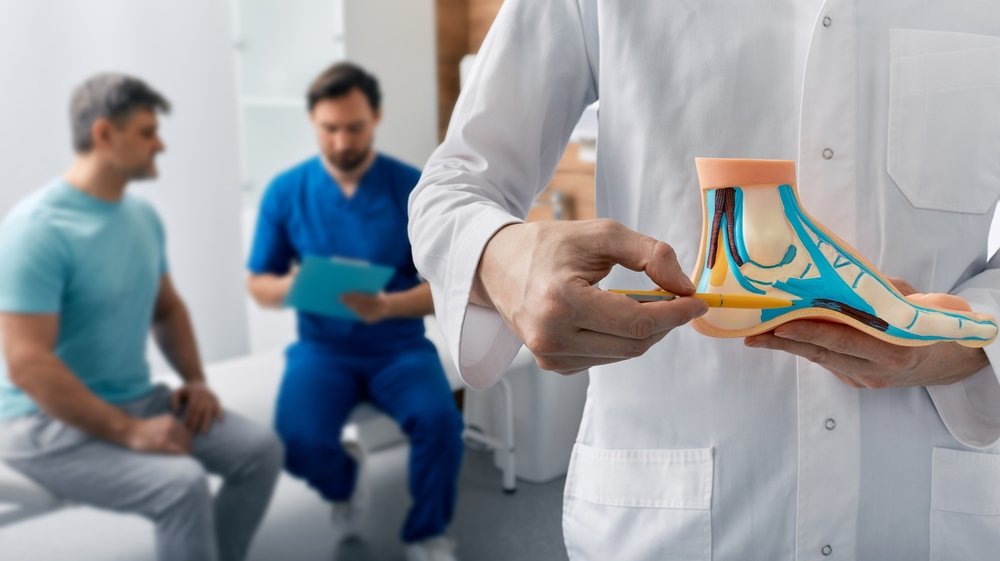 Did you know that approximately 10% of the population suffers from high arches, a condition known medically as pes cavus? High arches can lead to significant discomfort and complications if left untreated, making it essential for individuals to recognize the signs early on.
Did you know that approximately 10% of the population suffers from high arches, a condition known medically as pes cavus? High arches can lead to significant discomfort and complications if left untreated, making it essential for individuals to recognize the signs early on.
At Lake Erie Podiatry, we are dedicated to diagnosing and treating conditions related to foot structure and function. Located in Erie, PA, we pride ourselves on being the leading experts in comprehensive podiatric care, offering both conservative and surgical interventions tailored to meet the unique needs of each patient. Our team, led by Dr. Michael Ruiz, is committed to providing exceptional care designed to relieve pain and restore mobility.
If you think you may have unusually high arches or experiencing foot or ankle issues, don't hesitate to schedule an appointment with us today.
Request An Appointment
In this blog, we will explore the five key signs that may indicate you have high arches, empowering you with the knowledge you need to take informed steps toward healthier feet.
What are High Arches?
High arches, or cavus foot, is a foot condition where the arch of the foot is higher than normal. This results in excessive pressure being placed on the heel and ball of the foot, leading to discomfort and pain. Individuals with high arches often have an exaggerated 'bowed' appearance to their feet.
High arches are generally inherited, but various underlying medical conditions can also contribute to their development. These include:
- Neurological disorders such as cerebral palsy and spina bifida
- Muscular dystrophy
- Polio
- Charcot-Marie-Tooth disease (CMT)
- Multiple sclerosis (MS)
- Injury or trauma to the foot or ankle
- Rheumatoid arthritis
- Platybasia (a condition where the base of the skull is abnormally low)
If left untreated, high arches can lead to a variety of issues such as the risk of developing conditions like plantar fasciitis, hammertoes, or calluses.
5 Signs You May Have High Arches
Although high arches are generally inherited, they can also develop over time due to various medical conditions or injuries. Here are five signs that may indicate you have high arches:
Sign #1: Foot Pain
Foot pain is one of the most common symptoms of high-arched feet. This can present as a sharp or dull ache in the heel, ball, or foot's arch. The pain may be worse with walking, or standing, for long periods, or wearing ill-fitting shoes.
If you experience persistent foot pain that does not improve with rest and over-the-counter pain medication, it's important to seek medical attention to determine the underlying cause.
Sign #2: Difficulty Finding Shoes That Fit Well
Individuals with high arch feet often have difficulty finding shoes that fit comfortably due to their unique foot structure. Common complaints include shoes feeling too tight in the midfoot and too loose in the heel.
If you find yourself constantly struggling to find footwear that fits properly, it may be indicative of high arches and warrants further evaluation by a podiatrist.
Sign #3: Foot and Ankle Instability
A high arch can also lead to instability in the foot and ankle. This can manifest as frequent foot and ankle sprains or strains, difficulty balancing on one foot, or a feeling of 'rolling' the ankle.
If you notice that your ankles often feel weak or unsteady, it may be due to high foot arches causing instability in your feet.
Sign #4: Claw Toe Deformity
People with high arches may also develop a condition called claw toes, where the toes curl downward and become rigid. This is caused by an imbalance in the muscles and tendons of the foot, leading to changes in toe alignment.
If you notice your toes starting to curl or overlap, it's crucial to seek treatment before the condition worsens and causes further discomfort or disability.
Sign #5: Difficulty Walking or Standing for Prolonged Periods
High-arched feet can also affect walking and standing, causing discomfort and difficulty with these activities. The excessive pressure placed on the heel and ball of the foot can make it challenging to distribute weight evenly while walking or standing, leading to pain and fatigue.
If you find yourself avoiding certain activities due to foot discomfort or being unable to stand for extended periods without experiencing pain, it may be time to consider seeking professional care.
How Dr. Ruiz Can Help?
Dr. Ruiz and the team at Lake Erie Podiatry are experts in diagnosing and treating high arches. During your initial consultation, Dr. Ruiz will conduct a thorough evaluation of your feet, including a physical examination and any necessary imaging studies, to determine the underlying cause of your symptoms.
Based on his findings, he will create a personalized treatment plan to address your unique needs. This may include:
- Orthotics (custom shoe inserts): These are customized shoe inserts designed to support and align your feet correctly to alleviate pain.
- Physical therapy: Stretching exercises can help improve foot flexibility and strengthen muscles to better support the arch.
- Bracing or splinting: In severe cases, bracing or splinting may be necessary to correct foot structure and reduce pain.
- Surgery: In rare cases where conservative treatment methods are not effective, surgery may be necessary to correct the foot structure and alleviate symptoms.
Stop Suffering from High Arches – Visit Dr. Ruiz Today!
High arches can create significant challenges that impact your daily activities, but with the right support and intervention, relief is within reach. Trust the Lake Erie Podiatry team, led by Dr. Ruiz to guide you towards effective solutions and improved foot health.
Take action today—schedule your appointment with us at Lake Erie Podiatry and benefit from our in-depth expertise in podiatric care designed specifically for high arches. Your feet deserve the best!

